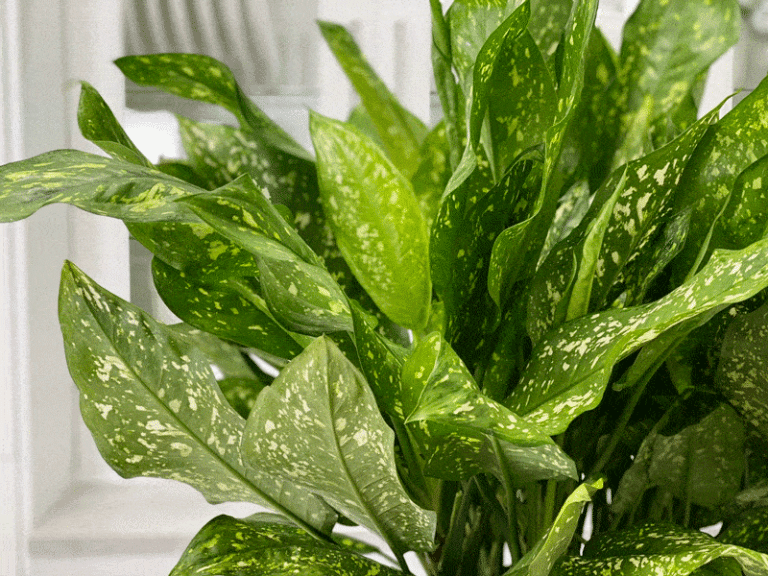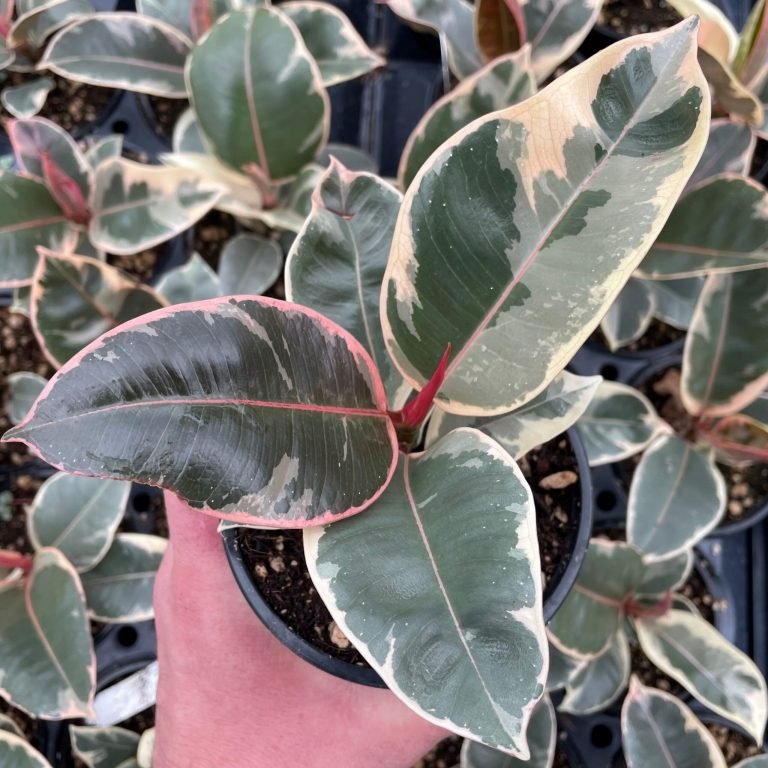Chinese Evergreen (Aglaonema ‘Silver Bay’) – All You Need To Know
About Chinese Evergreen (Aglaonema ‘Silver Bay’)
Aglaonema ‘Silver Bay’ is a cultivar of the tropical plant Aglaonema, also known as the “Chinese Evergreen,” that is native to Southeast Asia and is known for its glossy, green leaves and its slow-growing, upright growth habit. It is often grown as an ornamental plant in outdoor gardens or as a houseplant, and it requires low light and well-draining soil to thrive.
General Information
Family: Araceae
Category: Aglaonema
Origin: Hybrid
Native Climate: Tropical
Hardiness Zone: 11
Best as: Potted plant , Secondary & Tertiary plant.
Where to grow Chinese Evergreen?
Chinese Evergreen is a common household plant that can be grown in various environments. They are Tropical plants that thrive in the hardiness zone of 11 with a minimum temperature of 18 and maximum temperature of 28.
Below is a typical map of the US hardiness zone where you can check your location and see if Chinese Evergreen can survive in your locale.

Chinese Evergreen is native to the Tropical climate of Hybrid so it will survive best in a similar climate. However, being from a resilient Araceae family, it can also be found in most unusual places.
Sunlight Requirements of Chinese Evergreen
The idea lighting conditions for Chinese Evergreen is Strong light between 21,500 to 3,200 lux or 2000 to 300 foot-candle. However, it can also survive and grow in diffused light less than 5,300 lux or 500 foot-candle.
Watering Requirements for Chinese Evergreen
Chinese evergreen plants (Aglaonema spp.) are popular houseplants known for their tolerance of low light and infrequent watering. However, it is still important to understand their watering needs in order to keep your Chinese evergreen healthy.
Frequency of Watering
Chinese evergreen plants do not require frequent watering. Allow the soil to dry out slightly between watering sessions, and then water thoroughly until water drains out of the bottom of the pot. This typically occurs every 7-10 days, but may vary depending on the size of the pot, the type of soil, and the humidity and temperature of the environment.
Amount of Water
When watering your Chinese evergreen, it is important to use enough water to thoroughly saturate the soil. However, be sure to not leave the plant standing in water, as this can lead to root rot.
Signs of Overwatering
Some signs that your Chinese evergreen may be overwatered include:
- Yellowing or wilting leaves
- Soft or mushy stems
- Black or brown spots on the leaves
- A bad smell coming from the soil
If you notice any of these signs, reduce the frequency of watering and ensure that the soil has a chance to fully dry out before watering again.
In summary, it is important to pay attention to the specific watering needs of your Chinese evergreen and to allow the soil to dry out slightly between watering sessions. Use enough water to thoroughly saturate the soil, but be sure to not leave the plant standing in water. If you notice signs of overwatering, reduce the frequency of watering and allow the soil to fully dry out before watering again.
Is Chinese Evergreen prone to insects?
Chinese Evergreen is prone to attacks from Mealy bug & Scale. To protect your plants from insect attacks, it is important to follow a few general prevention guidelines. First, make sure to keep your plants healthy by providing them with proper sunlight, water, and nutrients. This can help make them more resistant to insect attacks. Second, inspect your plants regularly for signs of insects or other problems. Early detection can make it easier to manage an infestation. Third, consider using physical barriers, such as netting or row covers, to prevent insects from reaching the plants. If a plant becomes heavily infested, it may be necessary to remove it to prevent the infestation from spreading to other plants. Fourth, consider using natural predators, such as ladybugs and lacewings, to help control insect populations. If necessary, you can also use organic pesticides to control insect populations. Finally, practice good hygiene by keeping your garden clean and free of debris, as this can help prevent insect infestations. Remember that different insects have different habits and preferences, so it is a good idea to research the specific prevention techniques for the specific types of insects that you are trying to control.
Common diseases: Phytophtora , Crown rot
Common posture & style
Chinese Evergreen has a Clump posture and grow in a compact, rounded shape, with multiple stems emerging from a single point.
It has beautiful Grey & Medium green leaves. Its main appeal is its Foliage. It can grow up to the height of 1.22 meters with a truck width of 1.22 meters. It has a Regular growth speed under good conditions, watering, and sunlight.
Blooming Season: Seasonal
Bloom Color: Light green
Pruning: If needed
Why should you keep Chinese Evergreen in your home?
Keeping a Chinese Evergreen plant in your home can bring many benefits. For one, plants can improve the air quality in your home by removing toxins and releasing oxygen.
In addition, having plants in your home can help increase humidity, which can be particularly beneficial during dry winters.
Additionally, caring for your Chinese Evergreen plant can be a relaxing and therapeutic activity, and Chinese Evergreen in your home can add a touch of nature and beauty to your living space.
Overall, there are many reasons why everyone should consider keeping a Chinese Evergreen plant in their home if the climate is enabling for its growth.







